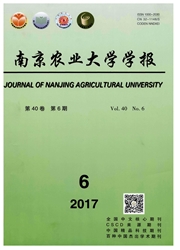

 中文摘要:
中文摘要:
2013年9月份龙江流域设20个采样点,综合采用硅藻多样指数法、硅藻指数法、硅藻生态类群评价法以及理化指标验证法,结合GIS技术对龙江水质进行评价,并提出了基于硅藻指数的水质比较评价的DIR法。结果表明,9月份,龙江流域水质总体处于中偏好水质标准;河流水体上游水质好于下游,支流好于干流;其中,下板六水电站、环江水文站、刘三姐乡、下江坝村、安马乡水质很好,而三岔镇、拉浪乡和大湾村水体水质很差。发现多样性指数法不适合龙江水质的评价,各种评价方法各有特点,为了研究的科学性和实用性,各种水质评价方法的联合采用是必要的。
 英文摘要:
英文摘要:
In September 2013,diatom assemblages were collected from 20 sites in the Longjiang River Basin in China. Following collection,we determined water quality by using a combination of GIS technology and a variety of indices,including diatom diversity,the diatom index,diatom ecological groups,and both physical and chemical indicators. We also proposed DIR,based on the water quality evaluation from the diatom index. The results showed that the water quality of the Longjiang River Basin was intermediate,but good for September. In addition,the water quality at upstream sites was better than that at downstream sites,and the water quality of the tributary was better than that of the main stream. More specifically,we found that the quality of water from the Xiabanliu Hydropower Plant,Huanjiang Hydrological Station,Liu Sanjiexiang,Xiabanliucun,and Anmaxiang was exceptional; however,the quality of water from Sanchacun,Lalangxiang and Dawangcun was poor. During our study,we also discovered that the diversity index was not suitable for evaluating the water quality at Longjiang. Thus,we suggest that each evaluation method has its own merits and that researchers should comprehensively utilize a variety of evaluation methods for both scientific and practical research.
 同期刊论文项目
同期刊论文项目
 同项目期刊论文
同项目期刊论文
 期刊信息
期刊信息
